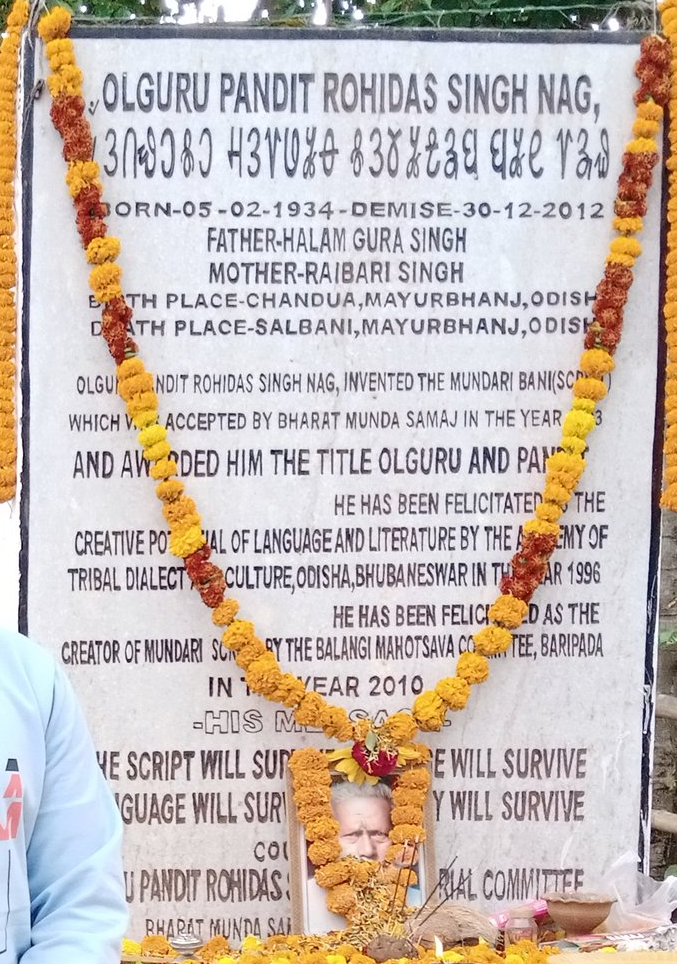Mundari, an Austroasiatic language spoken by 1.1 million people in India, primarily in the states of Jharkand, West Bengal, and Odisha, had been written in several other scripts (Devanagari, Bengali, Oriya, and Latin) before Mundari Bani was invented by Rohidas Singh Nag (1934 – 2012) in the latter half of the 20th century.
Nandalal Singh, president of Mundari Samaj Sanwar Jamda (an organization working in Odisha for the preservation and development of the Mundari language and cultural values), wrote: “[W]e see many languages die out gradually as successive generations of speakers become bilingual and then begin to lose proficiency in their traditional languages. We experience that the Mundari speakers seek to learn more prestigious language[s] in order to gain social and economic advantages or to avoid discrimination. Mundari is categorized as a vulnerable language…. [A] good number of books have been written in English, Hindi, and other regional scripts, but there is a problem of accurate pronunciation of Mundari and that is leading to poor acceptance of these literary works by … Mundari speakers.”
Nag, a writer, poet and community advocate, originally began working on the earliest iteration of the Mundari Bani script in the early 1950s while in grade school, writing on the walls using clay. Later, he simplified the Mundari Bani script and by the early 1980s began sharing it with others in the Munda community.
Nag presented the alphabet in the 1980s to then-Chief Minister of Odisha Janaki Ballabh Patnaik with a petition to recognize the Munda language constitutionally, and subsequently he and others submitted a memorandum to the then president of India in 1999, appealing again for constitutional recognition.
By 1994 Mundari Bani had spread further throughout Odisha state and in 2004 ten different Mundari Bani schools opened in Odisha. In 2004, the first book written in Mundari Bani was published—in handwritten form, as there was no typeface available at the time. In 2008, Bharat Munda Samaj and Mundari Samaj Sanwar Jamda, with the collaboration of original script inventor Rohidas Nag, reformed the script, altering some letterforms deemed confusing or hard to read or write, and adding two new characters.
In recent years, there has been a significant surge of interest in the script. More than 65 schools are teaching Mundari Bani as well as workshops throughout nearly all Munda-inhabited districts of Odisha, the districts of Jhargam, Purulia, and Medinipur in West Bengal, and the districts Ranchi, East Singhbum, West Singhbum, Saraikela-Kharsawan, and Kunti in Jharkhand. It is estimated that approximately 10% of Mundari speakers can read Mundari Bani. A number of different organizations and individuals have published primers for the script, as well as anthologies of stories and poems, and instructional videos by schools and individuals are available on YouTube and Mundari advocacy Facebook groups with content released in Mundari Bani. Five Mundari Bani typefaces have been developed by Baidyanath Singh.
“Because of this script,” Nandalal Singh concluded, “we see a ray of hope not only to keep Mundari language alive but also for its development.”

(Adapted from the Unicode proposal written by Lawrence Wolf-Sonkin and Biswajit Mandal)
20.2376° N, 84.2700° E
45/999